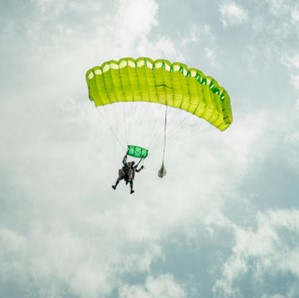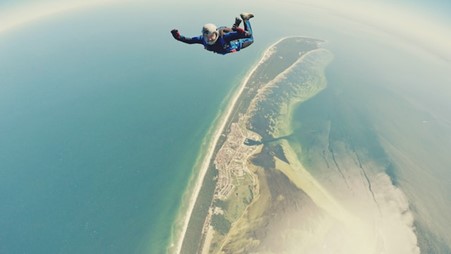Skydiving is a singular experience.
It’s at once surprisingly emotional and tremendously physical. It’s loud and thrilling and often scary. And in the end, it’s overwhelmingly satisfying.
Downtown Nixa Mark Anderson explains that the intensity of skydiving requires certain skills that consider the physicality of the sport as well as the unfamiliar emotions it may elicit, especially for first timers. While skydiving is considered extremely safe — in 2022, there were 20 recorded skydiving fatalities in the U.S. from an estimated 3.9 million jumps — both new and experienced skydivers need to develop and retain a skillset that makes the sport not just safe but enjoyable.
Prepare Effectively
Both the body and mind need to be considered when getting ready to skydive. Different jumps require efficient body movements and control. Skydivers should develop an understanding and comfortability with some of the most basic movements, including turns, and fall rates, while also considering stability.
Practicing such skills is easier with an experienced trainer, especially if one practices in a wind tunnel, along with muscle memory training and video assistance. Such sessions also help budding skydivers hone the decision-making skills needed whether the skydiving is done solo or with a group. Before jumps, people can use a trainer to practice making good decisions when faced with different situations and variables.
Wind tunnel training can expose new skydivers to different gusts and jump environments, helping the body and mind prepare well for any goal and helping divers better cope with impending sensory overload.
Such airmanship involves well-rounded knowledge of equipment, the aircraft, and technique but also good smart judgment and self-awareness.
Don’t Skip Courses
Skydiving skills aren’t learned in just one course. Skills camps with drop zone businesses cover everything from canopy piloting and general safety to whole camps focused on skydiving angles. Find a training center with a well-rounded list of skill courses — and don’t skip any of them.
Understand the Risks
Preparing to skydive for the first time can be overwhelming. When focusing on the basics, it’s easy to not focus too much on the risks. That’s a mistake.
Identifying risks is essential to skydiving safely and enjoying it. It’s also good to understand one’s limits as a skydiver. Such risks can include less-than-optimal weather, a lack of self-discipline, a lack of experience jumping, and less-than-ideal situational awareness. Once risks are identified, plans can be crafted to mitigate them or refine knowledge before the jump takes place.

Rely on Mentors
One of the most important skydiver skills is recognizing when one needs help. That’s why someone needs to jump with others who have considerably more skill than themselves. Learning from experienced skydivers helps one gain the skills needed to progress in their skydiving proficiency journey.
Take Mental Training Seriously
International skydiving competitors still commit to regular mental training, which can include relaxation techniques, practicing focus and concentration, and developing approaches to turning negative thoughts into positive ones.
Mental training can help skydivers not only visualize what they are about to encounter but also develop effective ways to cope with whatever may come their way.
